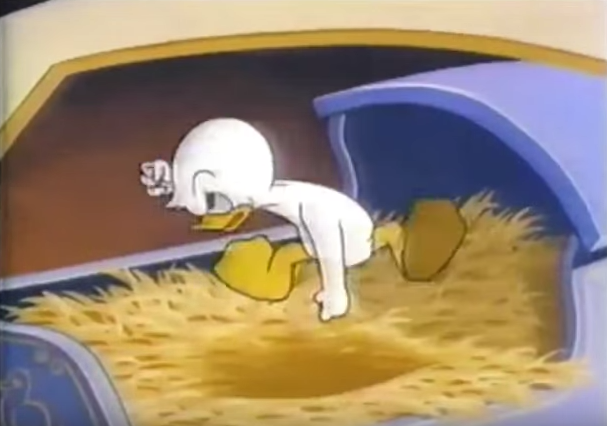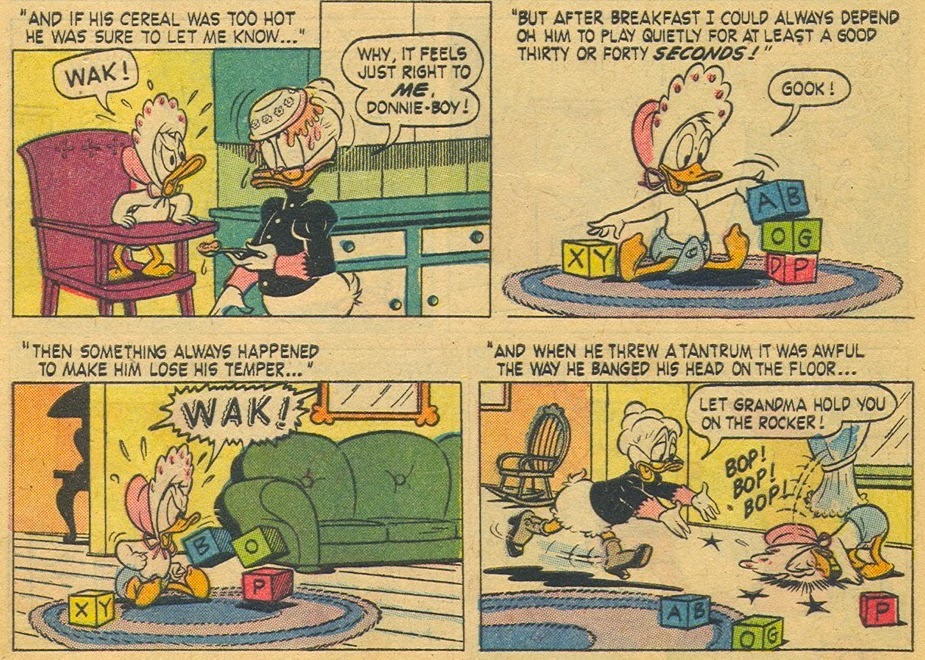Undeniably, the most popular way of intersecting animation and documentary is that of using animation to recount a factual occurrence. Yet, this is not the only possible manner in which they can combine. Another way of crossing them over consists in employing aesthetics and narrative structures commonly associated to nonfiction in order to narrate fictional stories, as it is the case of animated mockumentaries. This Is Your Life, Donald Duck (1960, by Jack Hannah & C. August Nichols) is an early example of this second possible marriage between animation and documentary. First aired on ABC on March 11, 1960 as part of the Disneyland series, this animated work mimics a then popular factual TV series created and hosted by Ralph Edwards: This Is Your Life (1952–1961). Like in this series, in This Is Your Life, Donald Duck a guest is surprised by seeing his life recounted on air through the testimonies of family members, friends and colleagues. Only, here the presenter is Jiminy Cricket and the life that is “documented” is not that of a real-life person, but of a famous cartoon character: Donald Duck.
This Is Your Life, Donald Duck is not a fully-fledged mockumentary. In Edward’s program the significant moments of each guest’s existence were recalled through the oral testimonies of people close to him or her, accompanied from time to time by photographs adding veracity to the narration. In this animated work, instead, Donald’s past is mostly visualized through recycling earlier fictional shorts, such as Donald’s Better Self (1938) and Donald’s Lucky Day (1939). Indeed, after initially having a cartoon character that was habitually part of his storyworld evoke on air a set episode that saw the duck protagonist, the documentary premise is temporarily abandoned and the viewer is offered to watch an old short dramatizing that occurrence. The pretense of being in the act of attesting Donald’s life is re-gained only at the end of each short, when the film cuts back to the studio.
Yet, in the segments were the idea of it being a documentary is actually carried out Edward’s factual program isn’t simply recalled vaguely, as it later occurred instead in Sesame Street’s “Here is Your Life”, which was conceived purely as a parody of it.[i] On the contrary, the aesthetics and narrative structures peculiar to This Is Your Life – among which are for instance the fact of having the host read the life-story of his guest from a book and that of closing the episode with the protagonist surrounded by a group of familiar faces paying tribute to him – are imitated, so as to induce the viewer to immediately associate this animated work to Edward’s program, and thus to the factual televisual panorama. An explicit reference to This Is Your Life is also made at the outset of the program by having Jiminy Cricket open with the following words: “I have cooked up a brand new idea for you… with a little help of Ralph Edwards, of course. I call it This Is Your Life.”
Moreover, This Is Your Life, Donald Duck is conferred the appearance of a factual product also by exploiting a Disney documentary aesthetic, namely Jiminy Cricket itself. Indeed, between 1955 and 1959 this character presented diverse nonfiction animation series – among which I’m No Fool With… and You and Your… are probably the most renowned –, a fact that made him synonym with factuality in the eyes of the viewers of the time, and thus that, in a Disneyan perspective, makes him function here as a mark of veridiction.
In sum, as a whole, This Is Your Life, Donald Duck isn’t consistent enough in carrying on its documentary premise to refer to it as a proper mockumentary. Yet, since the sequences set in Jiminy Cricket’s studio fully employ this narrative style, I believe we can best describe the overall program as a collection of fictional shorts starring Donald inserted in a mockumentary framework. Hence, this animated work still amounts to a key precursor of contemporary projects like The Muppets (2015–2016) and more generally of the mockumentary form, which came to fully take shape only in the late 1960s.
To further suggest its importance in respect to the history of mockumentary is its comic book adaptation, created by Vic Lockman, Tony Strobl and Steve Steere and published as part of the Dell Series shortly after its televisual premier. While under certain respects the adaptation has been quite faithful, there are two major differences. The first regards the episodes of Donald’s past recounted, which are not the same as those told in the animated work, resulting with the comic book partly being an expansion of the film’s narrative. The second concerns the relationship to This Is Your Life, whose narrative structures are mimicked at an even greater degree than in the animated film. In particular, is avoided for the idea of this being a documentary about Donald’s life to get completely lost when the duck’s past is narrated. This effect is obtained by using an element widely employed in the many comic book adaptations of Disney’s nonfiction animated works: the caption. Captions are this medium’s counterpart to voice over narration and here their use helps giving the impression that what the panels are visualizing are the oral testimonies that Donald’s family and friends are providing in Jiminy Cricket’s studio.
The fact that one of the major changes operated in this adaptation – which was created in close collaboration with the Walt Disney Studios – went precisely in the direction of strengthening the impression of this being a documentary about Donald Duck gives rise to the following question: what if This Is Your Life, Donald Duck was originally supposed to be a full-blown mockumentary – and thus the film that, anticipating the first live-action ones, marked this form’s rise –, but the desire of re-using existing materials to save time and money ended up prevailing, causing its downgrading to just one of the many experiments that paved the way towards the birth of this form?
Cristina Formenti is an Adjunct Professor at University of Milan. She has recently received a PhD in Film Studies from the same university defending a thesis on the theory and history of animated documentary. She is author of the monograph Il mockumentary: la fiction si maschera da documentario (Mimesis 2013) and editor of Mariangela Melato tra cinema, teatro e televisione (Mimesis 2016). Her essays have appeared on various national and international journals, among which Bianco & Nero, Studies in Documentary Film and Alphaville.
[i] In these segments This Is Your Life is reinterpreted more as a reunion show wherein an object, such as a tooth or a loaf of bread, is reunited to figures that have had an important role in its past, as for instance the dentist who helped the first stay healthy or the baker who created the second.



